 General
General  General Archive
General Archive  Fantasy Bracket: Greatest NCAA Cinderellas - Final Round
Fantasy Bracket: Greatest NCAA Cinderellas - Final Round
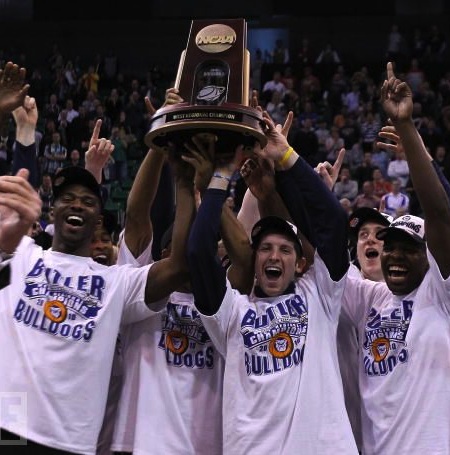 The idea was simple. Set up a fantasy bracket of 32 classic NCAA Cinderellas from the past 32 years, and have them square off via online votes until one team is crowned the most memorable and miraculous underdog of them all. Well, we’ve reached the championship round of that imaginary tournament, but by a peculiar twist of fate, the two greatest Cinderellas of all-time might already be playing each other this week-- not in our bracket, but in real life.
The idea was simple. Set up a fantasy bracket of 32 classic NCAA Cinderellas from the past 32 years, and have them square off via online votes until one team is crowned the most memorable and miraculous underdog of them all. Well, we’ve reached the championship round of that imaginary tournament, but by a peculiar twist of fate, the two greatest Cinderellas of all-time might already be playing each other this week-- not in our bracket, but in real life.
But before we get to that, let's take a look back at the goings on in Fantasyland over the past four weeks. For those who’ve been following the Cinderella Bracket… first of all, thanks-- you’re making the world a better place. Second of all, you’re probably aware that our Final Four didn’t quite turn out as the pre-tourney seedings might have suggested, as two #1 seeds got bounced in the round of 16 (National Champions ’85 Villanova and ’88 Kansas). Who knows, maybe that’s appropriate for a tournament dedicated to “surprise finishes,” but on closer inspection, it seems more likely that voters simply don’t associate the Cinderella moniker with schools from the Big 6 conferences—even undeniable longshots like the ’86 LSU Tigers (the first #11 seed to make an NCAA Final Four), who lost in the first round of our little tourney. Apparently, if your basketball program can afford really nice slippers, then you’re not really eligible for Cinderella status.
…Well, unless you’re the most oft-cited Cinderella story in college basketball history, of course. That’s the ‘83 North Carolina State Wolfpack, and despite coming out of the ACC, they advanced to our Final Four to play the emerging Cinderella of the Cinderella Tournament—your beloved 1986 Cleveland State Vikings. Many props to CSU for reaching the Sweet Sixteen as a 14-seed a quarter-century ago, but man, this is some serious homer-voting going on right now. Is CSU’s little run really more impressive than that of Villanova or the post-Hank Gathers run of Loyola Marymount in 1990? Apparently, Cleveland thinks so. Anyway, the other semi-final pitted the 2006 George Mason Patriots (the second 11-seed to reach an NCAA Final Four) against last year’s remarkable tournament runner-ups, the Butler Bulldogs. You voted for the winners of those two games over the past week, which finally brings us to our Cinderella Championship Match-up of… (drumroll)…
Greatest Cinderellas of the NCAA Tournament: Championship Game

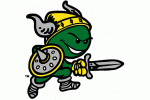 (1) Butler 2010
(1) Butler 2010
vs
(5) Cleveland State 1986
Butler 2010
2010 - Seed: #5 / Finish: Finals Runner-Up
Cinderella Bracket: def. Richmond (1988), Kent State (2002), Penn (1979), and George Mason (2006).
Cleveland State 1986
1986 - Seed: #14 / Finish: Sweet Sixteen
Cinderella Bracket: def. Xavier (2004), Villanova (1985), Loyola Marymount (1990), and N.C. State (1983).
Match-Up: Hey, don’t shoot the messenger! Of course the Vikings have no business being in this conversation, but this is what we’ve got. It was about time somebody ruined the legacy of Jimmy V and those montage-hogging N.C. State bastards, right? No? Well, whatever. It’s CSU vs. Butler in a Horizon League showdown fought beyond the limitations of space, time, and conference play. It’s Ken “Mouse” McFadden against Shelvin Mack. Clinton Smith vs Gordon Hayward.
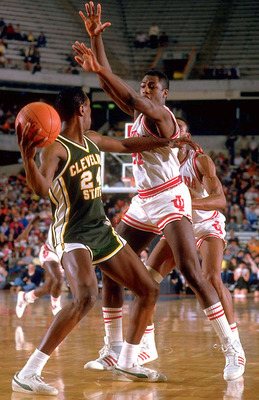 Last year’s Butler squad won the Horizon League with a record of 28-4, good enough for a #5 seed in the Big Dance, which they rode all the way to the last Monday of the tournament—a showdown with the mighty Duke Blue Devils in the Bulldogs’ own backyard in Indianapolis. In the end, they fell a buzzer-beater short of victory, but Brad Stevens and his band of scrappers had grabbed the country’s attention like probably no mid-major before them. Their victims included 12-seed UTEP (77-59), 13-seed Murray State (54-52, yikes!), 1-seed Syracuse (63-59), 2-seed Kansas State (63-56), and 5-seed Michigan State (52-50).
Last year’s Butler squad won the Horizon League with a record of 28-4, good enough for a #5 seed in the Big Dance, which they rode all the way to the last Monday of the tournament—a showdown with the mighty Duke Blue Devils in the Bulldogs’ own backyard in Indianapolis. In the end, they fell a buzzer-beater short of victory, but Brad Stevens and his band of scrappers had grabbed the country’s attention like probably no mid-major before them. Their victims included 12-seed UTEP (77-59), 13-seed Murray State (54-52, yikes!), 1-seed Syracuse (63-59), 2-seed Kansas State (63-56), and 5-seed Michigan State (52-50).
The ’86 Vikings enjoyed a similarly dominant regular season to Butler’s, finishing 27-3 in the AMCU-8 Conference (later known as the Mid-Continent Conference and eventually the Summit League) and entering the NCAA tourney on a 12-game winning streak. Even so, the Vikings were only handed a 14-seed and an intimidating pairing with Bob Knight and Indiana. Considering CSU had been ranked as high as #17 in the coaches poll during the season, though, it’s hard to say that what happened next was unthinkable, or that no one had heard of Kevin Mackey’s crew until that point. The Vikings had the talent, the momentum, and nothing to lose. The result was an 83-79 Cleveland State win—a huge upset by any standard, but maybe not even the biggest of that first round. Another 14-seed, the far less noteworthy Trojans of Arkansas-Little Rock, beat Notre Dame by a 90-83 count the same day. CSU was more than a one-trick pony, though, as they took down St. Joseph’s next (75-69) to become the first 14-seed to reach the Sweet Sixteen (Chattanooga became the second in 1997). Against the #7 seed Navy, though, the Vikings fell victim to a late, go-ahead lay-up from David Robinson that would prove their undoing, 71-70.
Interestingly, both the ’86 Vikings and 2010 Bulldogs had their miracle runs end with unsuccessful 30-foot heaves at the buzzer. Clinton Smith’s last second launch against Navy and Gordon Hayward’s desperation shot versus Duke both caught iron but failed to drop through, resulting in heartbreaking defeats—the carriage turning back to a pumpkin.
So… who deserves to be called the Greatest Cinderella Team? Butler clearly had the far deeper run. But, to play devil’s advocate, Cleveland State certainly had a much lower seed and far more challenging early round competition.
Maybe it’s all a moot point anyway. This Saturday, another low-seeded mid-major school is going to advance to the NCAA Championship Game in Houston. And whether it’s Virginia-Commonwealth or Butler Version 2.0, either school already is more than worthy of being in the Greatest Cinderella discussion.
Greatest Cinderellas of the NCAA Tournament: Reality Edition???

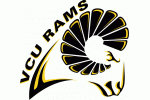 (8) Butler 2011
(8) Butler 2011
vs
(11) Virginia Commonwealth 2011
The 2011 Bulldogs might not be coming out of “nowhere” as they did last year, but their achievements might actually be more miraculous this season. A fluke is one thing, and luck does have its place in a one-and-done tournament… but back-to-back Final Four appearances from a mid-major school is completely unprecedented and impossible to argue with. On top of that, Butler is doing this without the best player from its 2010 run, Hayward, and without the dominant regular season performance, high tournament seed, or relative anonymity that made their road a bit easier a year ago (they’re a #8 seed this year compared to #5 in 2010).
All that said, it’s really VCU that has the inside track on crashing our little party and claiming the all-time Cinderella title as their own. A so-so season in the Colonial Athletic, a controversial inclusion in the field of 68, a play-in game assignment, mockery from every prognosticator. . . if a Cinderella story truly means rags to riches, pauper to prince, rejection to redemption—then the Rams fit the bill far more than the ’86 Vikings, 2010 Bulldogs, or just about any other team you want to throw out there. Even if it’s been all smoke and mirrors—which it clearly hasn’t been—VCU’s ridiculous run can perhaps only be compared to George Mason’s at this point, and Mason didn’t have to jump through the extra hoop of the play-in game. If the Rams manage to defeat Butler on Saturday, regardless of what then happens in the Championship, it would be very hard for me to say that any team has truly come from “nowhere” (unranked, no conference title, low seed) to these sorts of tournament heights before.
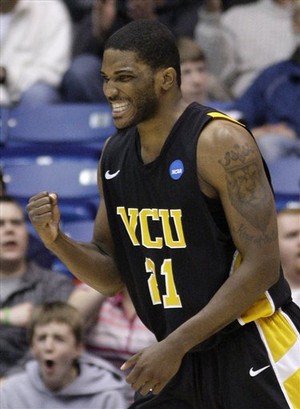 If forced at gunpoint to ignore the votes of you good people and rank the Top Ten NCAA Cinderellas (since the seeding system in 1979) as it stands right now, I think it would look a bit like this.
If forced at gunpoint to ignore the votes of you good people and rank the Top Ten NCAA Cinderellas (since the seeding system in 1979) as it stands right now, I think it would look a bit like this.
1. George Mason (2006) – they really set the new standard for “whaaaa?”
2. Villanova (1985) – had to be perfect to beat Georgetown, and they were
3. Virginia Commonwealth (2011) – I haven’t mentioned Shaka Smart yet, so, now I have
4. Butler (2010/2011) – haven’t decided which team is more surprising yet
5. N.C. State (1983) – the archetype
6. Loyola Marymount (1990) – most emotional storyline
7. Kent State (2002) – the MAC’s closest call
8. LSU (1986) – I mean, they were an 11-seed
9. Gonzaga (1999) – made them a household name
10. Cleveland State (1986) – what the hell, why not?
- NBA Announces 2013-2014 Schedule
- Browns Ink Sharknado
- Sharknado A No-Show For Rookie Camp
- Trent Richardson Out Until Training Camp
- Browns Sign Brandon Jackson
- Carrasco Suspended Eight Games
- Browns Add to Wide Receiver Depth with David Nelson
- Browns Need to Learn from Past Draft Mistakes
- Browns Release Chris Gocong and Usama Young
- Browns Missing on Grimes Disappointing, But Not The End
The TCF Forums
- Movies coming out
rebelwithoutaclue (Tuesday, January 21 2014 12:56 PM) - 2015 Recruiting
jclvd_23 (Tuesday, January 21 2014 12:38 PM) - The 2014 Offseason Thread
Larvell Blanks (Tuesday, January 21 2014 12:25 PM) - Official- Browns Coach Search/Rumors
Larvell Blanks (Tuesday, January 21 2014 11:53 AM) - Chris Grant's first 3 drafts
Kingpin74 (Tuesday, January 21 2014 10:13 AM) - Mike Brown
YahooFanChicago (Monday, January 20 2014 11:15 PM) - 2014 Hoops Hockey Hijinx
jpd1224 (Monday, January 20 2014 4:44 PM) - 2014 Recruiting
jclvd_23 (Monday, January 20 2014 2:26 PM) - Wish List - #4 Pick
Hikohadon (Monday, January 20 2014 1:26 PM) - #1 overall pick Anthony Bennett
TouchEmAllTime (Sunday, January 19 2014 1:28 PM)


